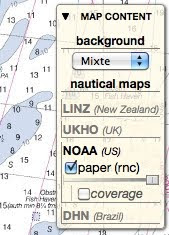NASA is following a curious short-lived event, the second tropical storm in recorded history reported by NASA to form in the cooler South Atlantic.
90Q (GOES12 satellite image) is located about 325 miles east of Puerto Alegre (near 30S / 45.8 W), has maximum sustained winds near 46 mph (40 knots) and continues moving in a general easterly direction away from the Brazilian coast.
The first tropical cyclone ever seen in recorded history in the South Atlantic occurred in March, 2004 and was called Catarina or 1-T Alfa.
TRMM (Tropical Rainfall Measuring Mission) satellite data showed thunderstorm tops near the center of the storm reaching to heights above 12.5 km.
90Q (GOES12 satellite image) is located about 325 miles east of Puerto Alegre (near 30S / 45.8 W), has maximum sustained winds near 46 mph (40 knots) and continues moving in a general easterly direction away from the Brazilian coast.
The first tropical cyclone ever seen in recorded history in the South Atlantic occurred in March, 2004 and was called Catarina or 1-T Alfa.
TRMM (Tropical Rainfall Measuring Mission) satellite data showed thunderstorm tops near the center of the storm reaching to heights above 12.5 km.






